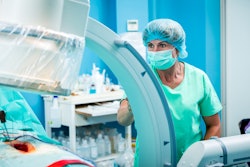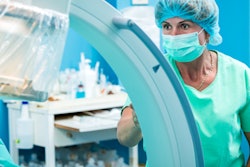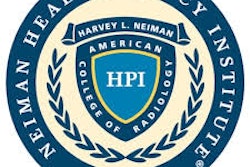The volume of interventional radiology (IR) procedures performed by advanced practice providers (APPs) such as physician assistants (PAs) and nurse practitioners (NPs) increased between 2010 and 2021, researchers have reported.
A team led by Will Lindquester, MD, of Emory University School of Medicine in Atlanta, GA, found a 142.9% increase in the volume of peripherally inserted central catheter (PICC) placement, paracentesis, and thoracentesis for NPs and a 66.7% increase for PAs for the study time frame -- and these percentages may be underestimations. The findings were published July 1 in the Journal of the American College of Radiology.
"Overall, participation of APPs in these procedures is likely underestimated, because procedures performed by APPs under direct supervision of a physician can be attributed to the physician," the investigators noted.
In some interventional radiology practices, advanced practice providers -- including PAs and NPs -- provide nonprocedural evaluation and management services, including consultations and clinic visits. But it also appears that the volume of PICC placements, paracentesis, and thoracentesis performed by PAs and NPs increased by 10.5% between 2010 and 2021-- in part because radiology practices are employing more of these staff, the group explained.
Lindquester and colleagues conducted an analysis of the volume of procedures commonly executed in interventional radiology by PAs and NPs via a study that included data from the Medicare Part B Physician/Supplier Procedure Summary Master File (PSPSMF) for 2010 and 2021. They did not include radiology assistants (RAs) in their research because this group did not have their own provider specialty code in the Medicare databases used for the study.
The team found the following:
- The volume of these common IR procedures performed by PAs and NPs has grown over the past eleven years by 10.5%, with a 142.9% increase in volume for NPs and a 66.7% increase for PAs.
- These particular staff types now perform 15.5% of all of these services.
"In a market with a limited supply of IR physicians (particularly in certain geographic locations) but a growing range of services interventional radiologists can offer, APPs have helped to fill certain gaps in procedural coverage," the team wrote.
The use of PAs and NPs in the interventional suite may save the department money, as they bill the Medicare Physician Fee Schedule (MPFS) at 85% of what physicians do, "potentially resulting in more than a 50% net savings in provider cost," according to the researchers.
"APPs can also help practices generate revenue by freeing up radiologists to perform more complex and higher revenue procedures or more diagnostic image interpretation," they concluded. "IR divisions can theoretically decrease costs and increase revenue by having a greater share of certain procedures performed by APPs."
The full study can be found here.



















